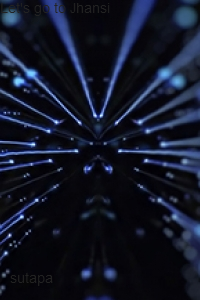
Let's go to Jhansi!
“Who will tell us about Lakshmibai, the Queen of Jhansi?” That was Miss Amber, our History teacher.
Our weekend assignment had been about Lakshmibai, the Rani who fought the British. Several hands went up.
‘When I point to you, just say one sentence about the famous freedom fighter,” said Miss Amber.
She pointed to Noke Wangnao from Nagaland.
“Lakshmibai was born at Kashi, in 1828,” Noke said.
Next. “As a child she was Manikarnika or Manu.”
Next.”In 1842, she married the Maharaja of Jhansi, Raja Gangadhar Rao. He named her Lakshmibai.”
Next was my turn. “The Raja and Lakshmibai adopted a son called Damodar Rao.”
The girl next to me said,“In 1953 the Raja died but the British did not let Damodar become the Raja of Jhansi.”
Miss Amber continued, “To seize Jhansi, the British ordered the Rani to leave. Lakshmibai was determined to defend Jhansi. She raised and trained an army of men and women soldiers and fought the British. Then what happened, Sonia?”
“The fort of Jhansi was surrounded and bombarded. A hole in the wall let the British into the fort but Rani escaped with her son.” Sonia knew the tale well.
Miss Amber continued.“Lakshmibai then joined the freedom fighters in the Gwalior fort. There was a battle against the British. On horseback, the Rani fought them. Now, everyone strap on your time bands, set it for June, 1858, and press.”
We strapped our time bands on our wrists. When we set the time, we could travel to any time in the past or future. I pressed the green tab. A vibration from my wrist shook my body. I felt weightless. A rush of air and I was sitting in an open field. It was very hot. Around me the dry grass was burnt. Next to me sat Sonia.
Boom!A loud blast. We crept to the tall rock in front and peeped over it. There were crowds of horsemen. Swords clanged and slashed. Men close by wore the yellow and green colours of Marathas. Beyond them we glimpsed the red coats of the British. On a hill facing our soldiers were the British cannons. Boom! Boom! Cannon balls fell a few feet from where we sat, scattering and killing many men and their horses. Screams and neighs filled the air.
“Horrible! I can’t stand this! How our fighters are suffering!,” Sonia cried out.
“Look, there she is! Our brave Rani!” I had spied her.
Astride a big horse, the Rani, dressed like an ordinary soldier, was wielding a huge sword. I recognized her by her long braid and the small boy tied behind her. Her sword swung like lightening. There a redcoat fell, here another screamed.
“Oh no!” shouted Sonia. I shut her mouth with my hand.
Three British soldiers surrounded Rani Lakshimibai. She slashed the one on her left and instantly swung to the soldier on her left. Fiercely she fought them both. But she was cut down from behind.
In front of our disbelieving eyes, the Rani fell. Luckily her horse escaped with Damodar, her son. On the ground, bleeding from a wound on her head, she shot at the horseman with her pistol. Blinded by the pouring blood, she missed. The next moment, another soldier aimed his rifle at the fallen woman and pulled the trigger. A sharp report! The Rani lay in the dust, lifeless.
Dumbstruck, we watched the soldiers go off. They had not realized that it was none other than braveheart, Rani Lakshmibai, whom they had killed. Tears streamed down our face.
A loud buzzing interrupted from our time bands. Our period was over and we had to leave.
We reached our classroom. As each of our friends came in we saw their faces were wet with tears. All of us were grieving for the loss of India’s greatest heroine, the Rani of Jhansi.
About the Author







Comments